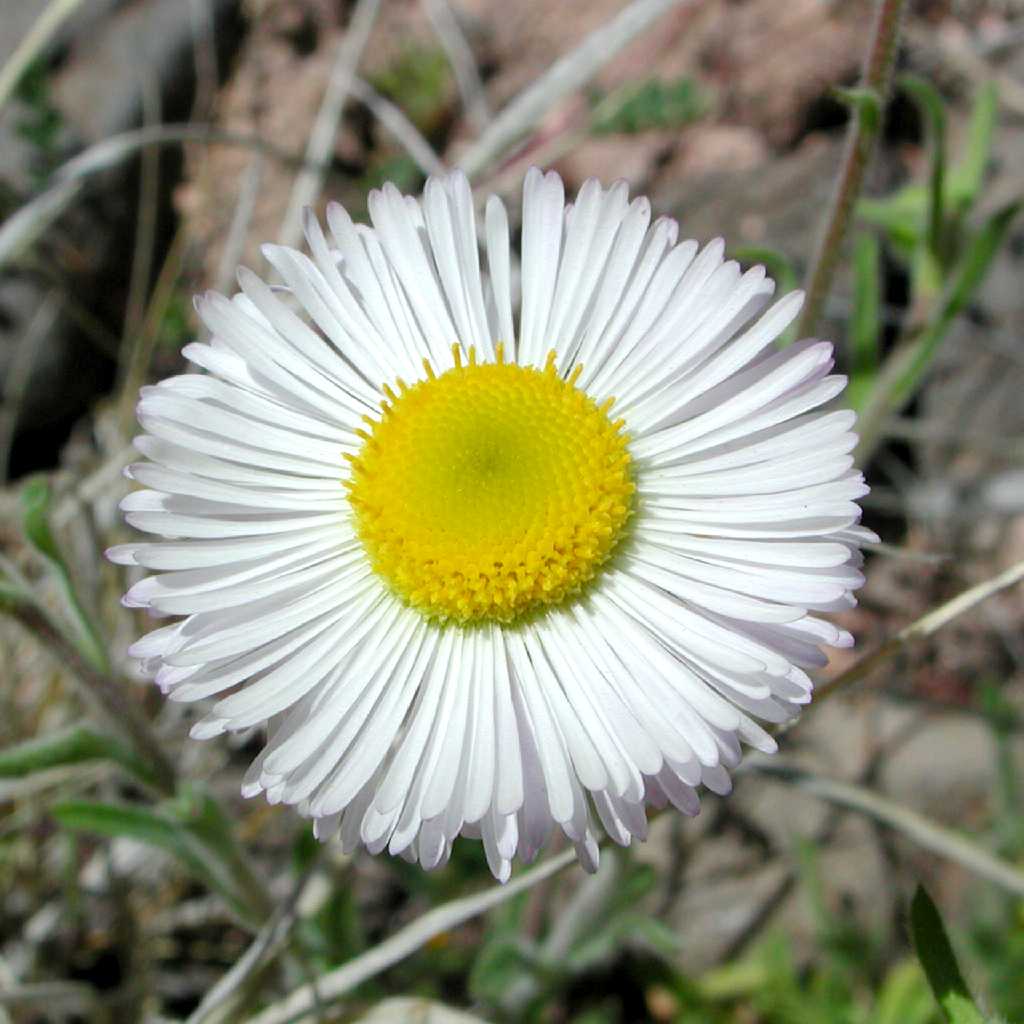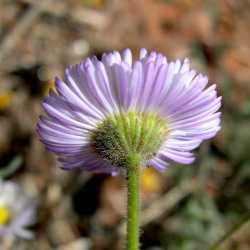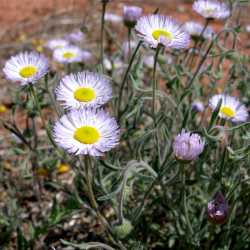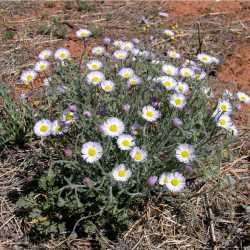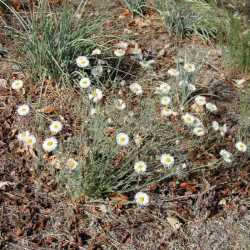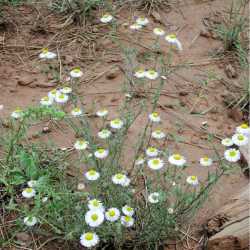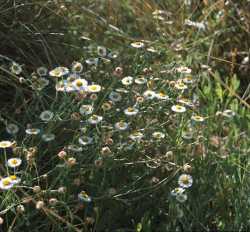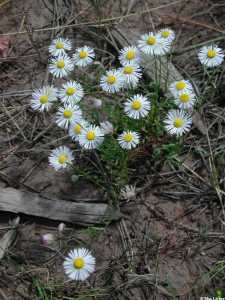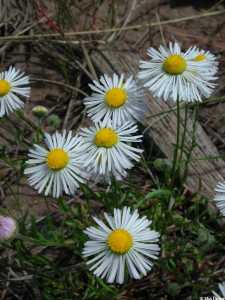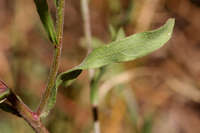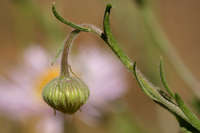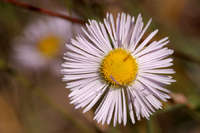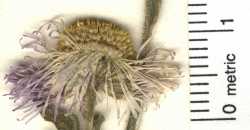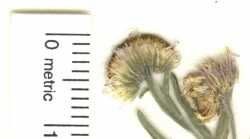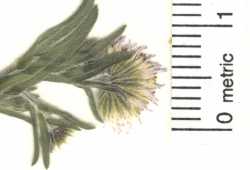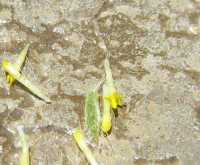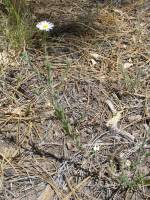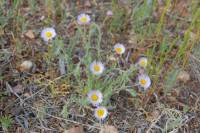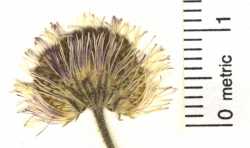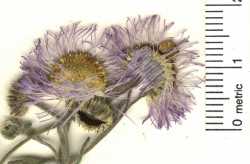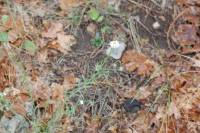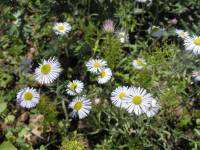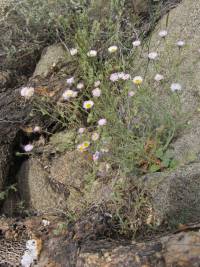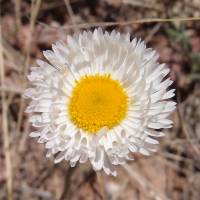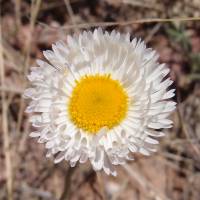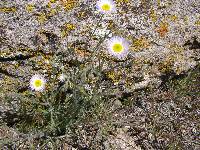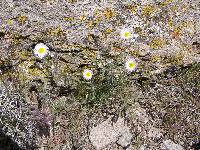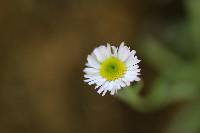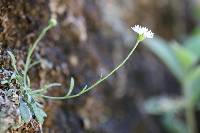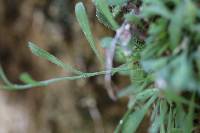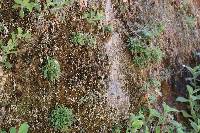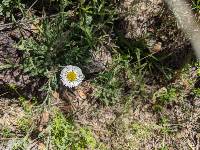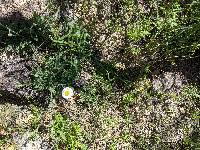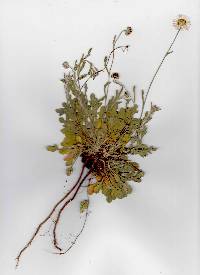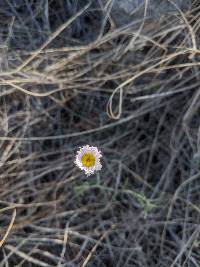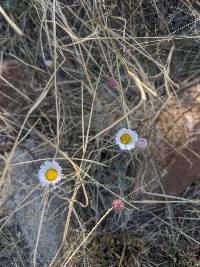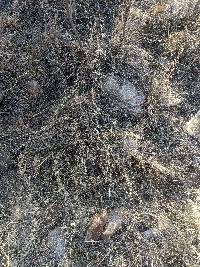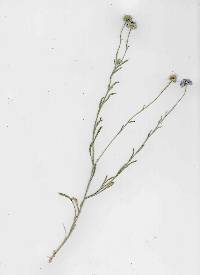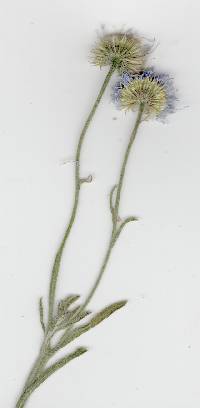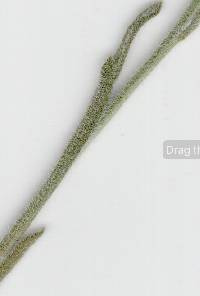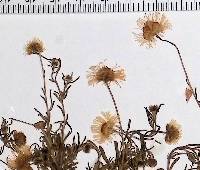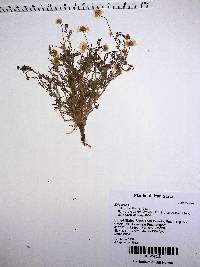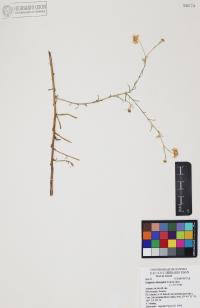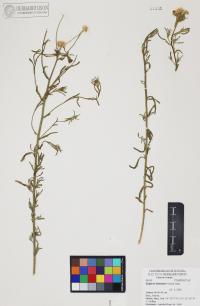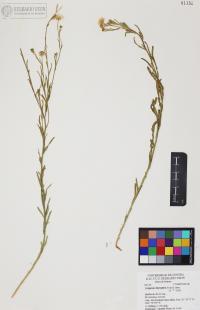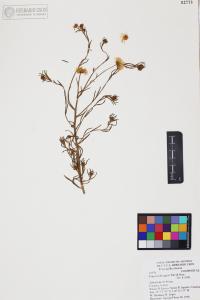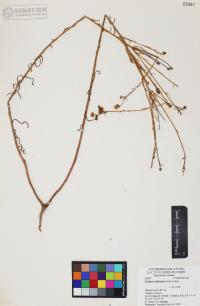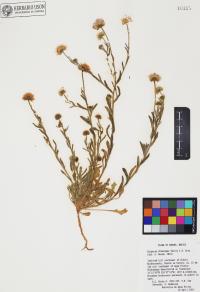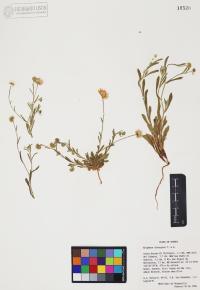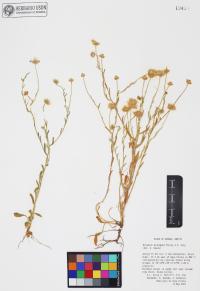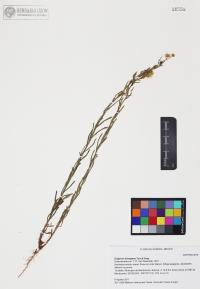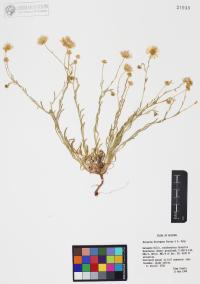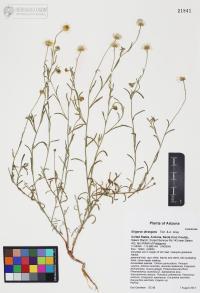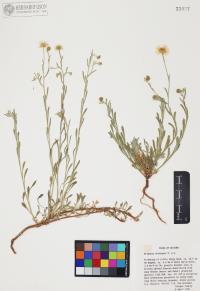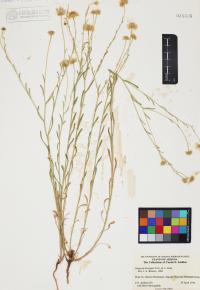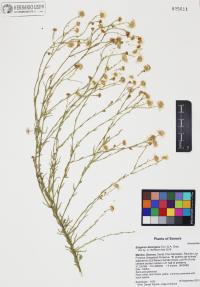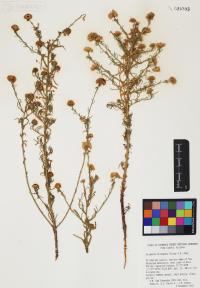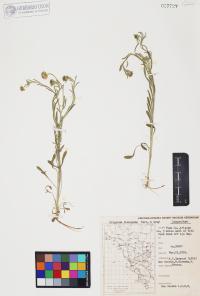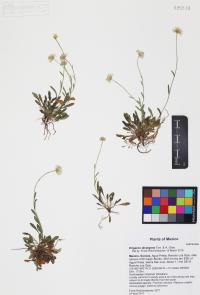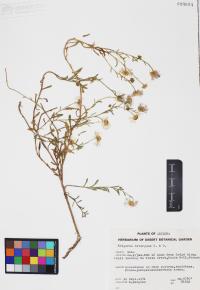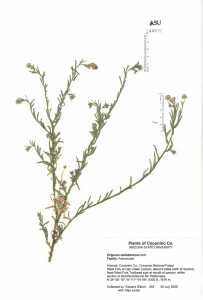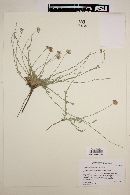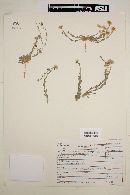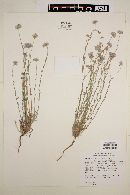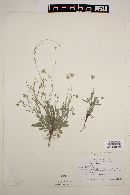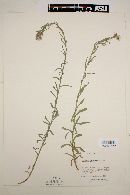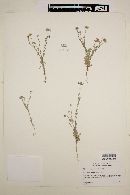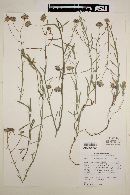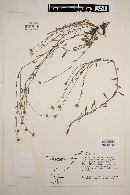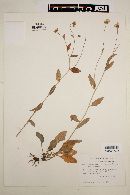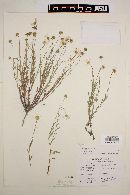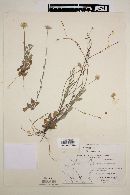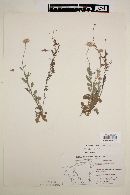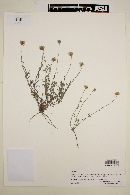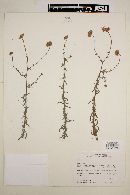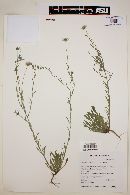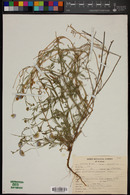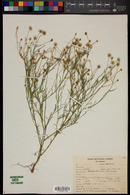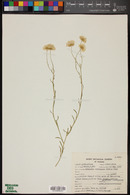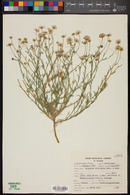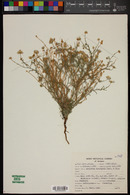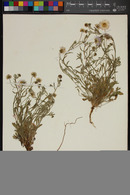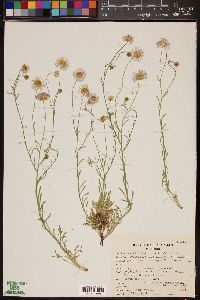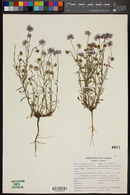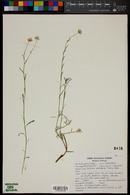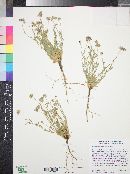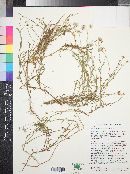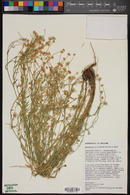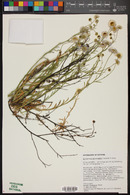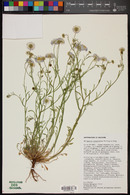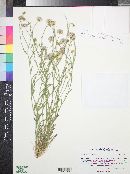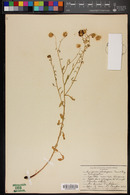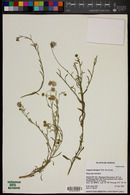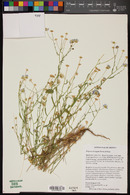Erigeron divergens
|
|
|
|
Family: Asteraceae
Spreading Fleabane, more...fleabane daisy, desert fleabane, spreading daisy
[Erigeron divergens var. typicus Cronq.] |
Three major morphological variants within Erigeron divergens sensu lato are found in its range in the southwestern USA. In the rest of the range (mostly northward), only the annual forms occur. 1. Annual plants essentially single-stemmed from the base (Erigeron divergens sensu stricto), with branches arising laterally from various points above the base but only uncommonly from near the very base (Figs. 1–3). This form occurs from Mexico north into western Canada. Erigeron divergens Torr. & A. Gray, Fl. N. Amer. 2: 175. 1841. Based on ErigerondivaricatusNutt., Trans. Amer. Philos. Soc. 2, 7: 311. 1840 [not E. divaricatus Michx. 1803]. TYPE: USA. Protologue: "Rocky Mountains, and plains of the interior of Oregon, Nuttall!" No 2. Annual plants (sometimes short-lived perennial) with multiple stems from the base, all usually arising compactly from a caudex-like taproot apex, sometimes (in early season plants) bowl-shaped with decumbent-ascending stems and solitary heads topping unbranched stems (Fig. 4). Basal and lower cauline leaves are spatulate, the blades with entire or shallowly toothed margins. Plants of this form have a tendency to develop strongly woody taproots and a caudex with separated meristematic apices and in these respects are similar to E. incomptus, with which they may hybridize (Figs. 5, 6). The annual, "multicipital caudex" form occurs in northwestern Mexico into southwestern Texas, New Mexico, Arizona, and California. It is conceivable that the perennial E. multiceps Greene, which has this growth form, is a direct derivative of annual E. divergens (see comments in Nesom 2006). 3. This variant is considered E. incomptus (sensu stricto) in this treatment: Perennial plants (flowering in the first year from a slender taproot but eventually producing a woody taproot and woody, branching caudex) with pinnatifid basal and lower cauline leaves with long petioles persistent after the blades are gone (Figs. 7–19, Figs. 7–14 showing increasing development of a woody caudex). The pinnatifid leaves usually are crowded along 1–4(–8) cm of the stem base. Such plants, which I have annotated at various times and referred to (e.g., Nesom 2006) as the "Erigeron accedens form" of E. divergens, occur widely in Arizona and into adjacent southwestern Utah, southwestern New Mexico and El Paso Co., Texas, and at least in northern Sonora and Chihuahua, Mexico. Apparently disjunct outliers occur in north-central California and northwestern Baja California (Map 1, Mexican localities other than Baja California not shown). The earliest name for the perennial form of Erigeron divergens is E. incomptus A. Gray. For more details, see: Nesom, G.L. 2015. Variants of Erigeron divergens (Asteraceae). Phytoneuron 2015-61: 1–24. Also see Erigeron incomptus Note: This treatment includes Erigeron incomptus. Annuals or short-lived perennials, (7-)12-40(-70) cm; taprooted, caudices simple if perennial. Stems (single or multiple from bases) erect to ascending, densely and evenly puberulous-hirsutulous (hairs spreading to spreading-descending or -ascending, often crinkly, bases not thickened), minutely glandular at least distally, usually throughout. Leaves basal (usually deciduous) and cauline; basal blades obovate-spatulate, 10-70 × 4--14 mm, cauline gradually reduced distally, margins entire or with 2-3 pairs of teeth or lobes, faces hirsute to loosely strigoso-hirsute, sometimes sparsely glandular. Heads (in early season, 1-)5-100+ (buds nodding). Involucres 3-4 × (5-)7-11 mm. Phyllaries in 3-4 series, hirsute, minutely glandular. Ray florets 75-150; corollas white, drying lilac, without abaxial midstripe, (2-)4-9.5 mm, laminae not coiling or reflexing (remaining relatively straight). Disc corollas 1.8-2.3 mm (throats indurate and slightly inflated). Cypselae 0.9-1.2 mm, 2-nerved (nerves whitish), faces sparsely strigose; pappi: outer of setae or scales, inner of 6-9(-12) bristles. 2n = 18, 27, 36. The form of Erigeron divergens with persistent, deeply pinnatifid basal leaves with relatively long petioles and tendency toward perenniality (woody taproots) has been named E. accedens [occurs at 200-1000(-1200) m and flowers Feb-Apr(-May)]. Such plants have sometimes been identified as E. lobatus, and it is possible that they may have originated as hybrids with it; in most ways they are similar to E. divergens and apparently intergrade with it. The E. accedens form occurs in California, Arizona, New Mexico, southwest Texas, Baja California, northern Sonora, Durango, and Chihuahua, apparently sympatrically with more typical E. divergens, suggesting that the former is stabilized and self-reproductive (probably agamospermic). Available chromosome counts are triploid. Rare plants (e.g., E. incomptus) may have filiform rays barely extending past the involucre. Another common form of Erigeron divergens in the broad sense (mostly in Chihuahua, also southern Texas, New Mexico, and Arizona) has bowl-shaped plants with decumbent stems, a discrete taproot, persistent, lobed basal leaves, and solitary heads topping usually simple stems, and usually is early-season in phenology. Further comments related to variation in E. divergens are found under 163. Erigeron multiceps.
FNA 2006, Wiggins 1964, Kearney and Peebles 1969, Heil et al 2013 Note: This treatment includes Erigeron incomptus. Duration: Annual, Perennial Nativity: Native Lifeform: Forb/Herb General: Annual to short-lived perennial herb from a taproot, 5-50 cm tall; stems branched from base and above, erect to ascending but often weak, and covered with spreading hairs. Leaves: Alternate along the stem, often also with a cluster of basal leaves persisting into adulthood; lower leaves larger, up to 5 cm long, long-petioled, oblanceolate, and entire to slightly lobed; upper leaves smaller, sessile, and linear in shape. Flowers: Flower heads showy and radiate, with white to purple rays and yellow discs, usually numerous and located on the ends of long leafy peduncles; involucres hemispheric, 4-5 mm high and 7-11 mm wide, the phyllaries in 3-4 series, hirsute, and minutely glandular; ray flowers 75-150 per flower head, the petals 5-10 mm long and pale blue, pink or white; disc flowers yellow. Fruits: Achenes sparsely hairy, 2-4 veined; topped with an inner pappus of 5-12 long, fragile bristles surrounded by an outer pappus of short, narrow scales. Ecology: Found in a wide variety of habitats including roadsides, riparian zones, woodlands, and forests, from 1,000-9,000 ft (305-2740 m); flowers April-Sept. Distribution: Most of western N. America from the Pacific to the Mississippi; south to s MEX. Notes: Erigeron is a difficult genus, with many similar looking species distingushed from each other by subtle and obscure characters. A hand lens is necessary for field ID, and making a collection is generally advisable in order to have any confidence in a determination. Identify the genus as a whole from its characteristic daisy-like flowers with white to pale purple rays and yellow centers (although a few species have extremely small rays); involucres with 2-5 series of phyllaries, all about the same length (subequal); and tufts of bristles on the tops of the seeds. E. divergens is possibly the most commmon Erigeron spp. in the southwest; it is highly variable in growth form, ranging from bushy and dense to upright with few stems and even decumbent. It also grows in a great variety of habitats, from low desert riparian to Ponderosa Pine forest. It is distinguished by being a biennial or short-lived perennial; having stems with spreading hairs (use your hand lens); leaves reduced as you move up the plant, these mostly simple but sometimes wth 2-3 pairs of lobes; and daisy-like flowering heads 7-11 mm in diameter. There are a number of other Erigeon spp. that strongly resemble this one, but E. divergens is by far the most common. Ethnobotany: Aerial parts are sometimes used to make oil to treat pets for fleas (Hence the common name - fleabane). Many Erigeron spp. used similarly. Etymology: Erigeron means Early-Old-Man, as named by Theophrastus; divergens refers to the divergent, or spreading, hairs on the stems. Synonyms: Erigeron divergens var. typicus Editor: SBuckley 2010, FSCoburn 2014, AHazelton 2017 |
|
|
|

